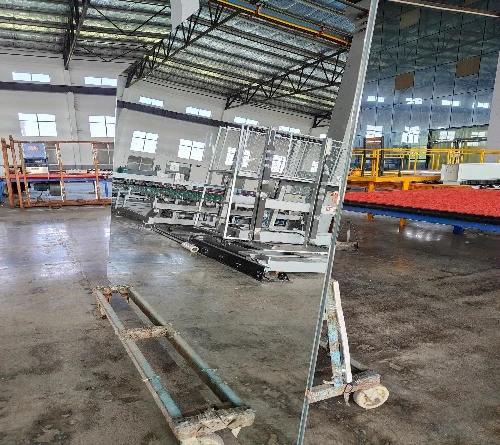Dec . 06, 2024 19:02 Back to list
tin bath float glass
The Tin Bath Process in Float Glass Manufacturing
In the world of glass manufacturing, one of the most significant advancements is the development of the float glass process, which revolutionized the production of high-quality flat glass. At the heart of this innovative technique lies the tin bath, a critical component that facilitates the creation of uniform, smooth glass sheets with superior optical properties. This article explores the intricacies of the tin bath float glass process, its advantages, and its impact on the glass industry.
The float glass process was invented in the 1950s by Sir Alastair Pilkington and has since become the standard method for producing flat glass used in windows, mirrors, and various other applications. The key innovation in this process is the use of a molten tin bath, where glass is floated on the surface of molten tin, creating a flawless surface and uniform thickness. The core of this method involves the careful manipulation of temperature, composition, and flow to achieve optimal results.
The float glass process begins with the melting of raw materials, primarily silica sand, soda ash, and limestone, in a furnace at temperatures exceeding 1,400 degrees Celsius. This mixture forms a molten glass, which is then carefully introduced into a bath of liquid tin at approximately 1,000 degrees Celsius. The density of the molten glass allows it to float on top of the tin, which is denser and does not mix with the glass.
tin bath float glass

Benefits of using a tin bath are manifold. Firstly, it allows for a high degree of control over the thickness of the glass. By adjusting the speed at which the molten glass moves along the tin bath, manufacturers can produce sheets with varying thicknesses, meeting diverse customer specifications. The smooth surface of the tin also results in a uniform texture, vital for applications where optical clarity is paramount, such as in the automotive and architectural glass sectors.
Moreover, the float process is highly efficient, as it enables continuous production. The glass ribbon emerges at a predetermined thickness, which can be cut into desired dimensions, reducing material waste. The tin bath system, with its ability to produce large sheets of glass, also aligns with the demands of modern construction and design, where large, uninterrupted panes of glass are increasingly favored for their aesthetic appeal and functionality.
Another crucial aspect of the tin bath float glass process is its environmental footprint. Although the melting of raw materials consumes a considerable amount of energy, advancements in technology and furnace design have led to more energy-efficient processes. Furthermore, tin is recyclable, and the float glass industry has made significant strides in promoting sustainability by recycling waste glass, subsequently reducing the demand for raw materials and energy consumption.
In conclusion, the tin bath float glass process has transformed the glass manufacturing landscape, allowing for the production of high-quality, uniform glass sheets that cater to a wide array of applications. This technology not only enhances optical clarity and quality but also supports efficiency and sustainability in manufacturing practices. As the glass industry continues to innovate and evolve, the fundamental principles of the float glass process will undoubtedly remain integral to its future developments. The continued refinement of this process promises to further enhance the performance and design capabilities of flat glass, maintaining its vital role in our built environment.
-
Safety and Style with Premium Laminated Glass Solutions
NewsJun.24,2025
-
Reinvents Security with Premium Wired Glass
NewsJun.24,2025
-
Premium Float Glass Line for Modern Architecture
NewsJun.24,2025
-
Low Emissivity Glass for Energy-Efficient Architecture
NewsJun.24,2025
-
High-Performance Insulated Glass Solutions for Modern Architecture
NewsJun.24,2025
-
Elevates Interior Style with Premium Silver Mirror
NewsJun.24,2025
Related PRODUCTS














